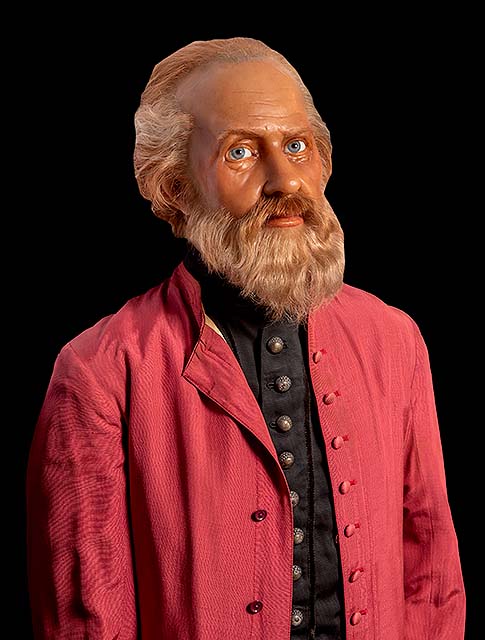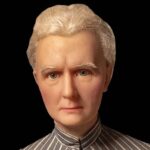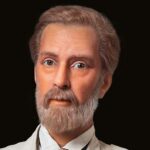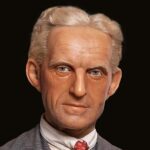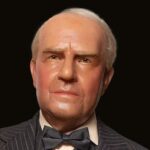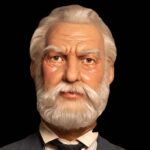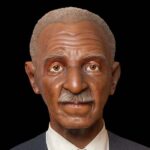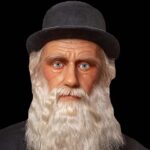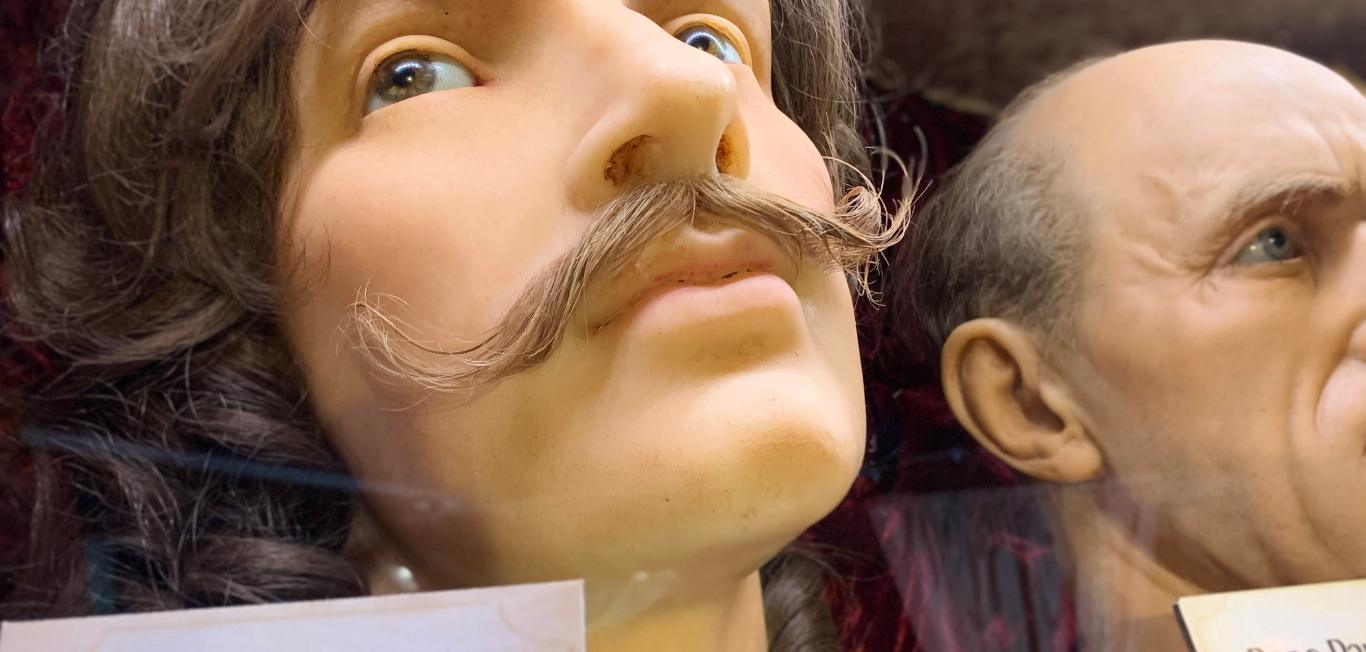Biography of Galileo Galilei
Galileo Galilei was born on February 15, 1564, in Pisa, Italy. Galileo is recognized as an Italian astronomer, physicist and mathematician. His contributions to science transformed our understanding of the natural world and the development of the scientific method, earning him the name “father of modern science.”
Galileo Galilei’s biography documents his journey from his early education in the fields of mathematics and physics to his groundbreaking discoveries in astronomy. As a young boy, Galileo demonstrated the qualities of a Renaissance man due to his vast curiosity and interests, which led him to become an expert in many subjects. Galileo’s education began at a local monastery, where he proved to be proficient in mathematics, thus prompting his father to encourage him to study medicine. By the age of 17, Galileo was a student at the University of Pisa, studying medicine, but he quickly reverted to mathematics and natural sciences and developed an interest in Greek philosophy. Two years into his studies, Galileo’s revelations became controversial to the university, and in 1585, he left before completing his degree, embarking on a journey of individual studies. He later became a professor of mathematics at the University of Pisa in 1589 and significantly advanced the study of motion, laying the groundwork for Isaac Newton’s laws of motion.
DID YOU KNOW?
Galileo significantly advanced the study of motion, laying the groundwork for Isaac Newton's laws of motion.
12 Facts About Galileo Galilei
From an early age, it was evident that he possessed the qualities of a true Renaissance individual.
The scientist discontinued his studies at university.
Galileo remained unmarried throughout his life, yet he did have children.
He demonstrated great inventiveness, producing a multitude of creations.
Galileo directed his gaze skyward with the aid of the telescope.
The observations he made through his telescope profoundly impacted the world.
He gained immense popularity and favor among royal circles.
Galileo found himself at odds with the Church, although his disagreements were not directed toward Catholicism as a whole.
His vision deteriorated over time, but it was not due to prolonged exposure to the sun.
To this day, the astronomer is known to have maintained a steadfast focus on the celestial realms.
He gained a reputation as an engaging and provocative educator.
The intentional resemblance in the names “Galileo” and “Galilei” was a deliberate choice.
The Greatest Achievements of Galileo Galilei
Galileo Galilei, one of history’s most influential scientists, achieved numerous notable accomplishments during his early life. Here are a few of his significant achievements:
Study of Mathematics: In his early years, Galileo demonstrated exceptional mathematical talent. While attending the University of Pisa, he studied mathematics under the guidance of influential mathematicians of the time. Galileo’s deep understanding and proficiency in mathematics laid the foundation for his future scientific endeavors.
Law of the Pendulum: One of Galileo’s earliest breakthroughs was his observation and analysis of a pendulum’s motion. By carefully timing the swings of a suspended weight, Galileo discovered that the period of oscillation remains constant regardless of the swing’s amplitude. This fundamental principle, known as the law of the pendulum, significantly contributed to the field of physics and led to the development of accurate timekeeping devices.
Hydrostatic Balance: Galileo’s invention of the hydrostatic balance, also called the Archimedean balance, was an important achievement during his early years. This device allowed for precise measurements of the density of objects and liquids. The hydrostatic balance played a key role in Galileo’s investigations into the principles of buoyancy and helped establish a quantitative understanding of fluid mechanics.
Theory of Buoyancy: Building upon Archimedes’ principle, Galileo developed his own theory of buoyancy. Through experimentation and observation, he formulated a mathematical relationship between the weight of a submerged object and the displaced fluid. This achievement contributed to the understanding of buoyant forces and furthered the field of hydrodynamics.
Professor at the University of Pisa: Galileo’s reputation as an expert mathematician and scientist led to his designation as a professor of mathematics at the University of Pisa in 1589. This esteemed position was granted due to recognition of his early achievements and provided him with a platform to further develop his ideas and mentor future scientists.
Laws of Motion: Galileo made momentous progress in the study of motion and mechanics throughout his time at the University of Pisa. By formulating principles that challenged traditional Aristotelian ideas, he proposed the concept of inertia, stating that an object in motion tends to remain in motion unless acted upon by an external force. These early findings laid the roadmap for his later formulation of the laws of motion.
Galileo proposed the concept of inertia, stating that an object in motion tends to remain in motion unless acted upon by an external force.
Galileo Galilei’s early achievements in mathematics, physics and engineering laid the groundwork for his later groundbreaking discoveries. His contributions to the understanding of the pendulum, hydrostatics, and buoyancy showcased his ability to merge observation, experimentation, and mathematical analysis. Furthermore, Galileo’s appointment at the University of Pisa and his development of the laws of motion set the stage for his remarkable career and enduring impact on the scientific community.
Inventions Made by Galileo Galilei
Galileo Galilei’s contributions to science earned him notoriety, as he created several inventions that played a critical role in advancing knowledge and paving the way for scientific progress. Galileo contributed numerous inventions and improvements to the field of science, but these distinct instruments are the most renowned and used across various fields, such as astronomy, physics, and engineering.
Telescope: Galileo is not the original inventor of the telescope, but his improvements to this tool’s existing designs resulted in a far superior and precise instrument. Galileo’s advancements to the telescope allowed for detailed observations of celestial bodies, revolutionizing astronomy. His observations of the moon, Jupiter’s moons, and Venus’ phases provided pragmatic evidence supporting the heliocentric model of the solar system. Galileo’s telescope is a testament to his ingenuity and his ability to utilize technology for scientific exploration.
Geometric and Military Compass: Galileo’s invention of the compasso geometrico e militare, also known as the geometric and military compass, provided additional features beyond simple magnetic orientation. His compass incorporated a graduated scale, which enabled measurements of angles and distances. This instrument’s practical applications in surveying, navigation, and military operations created a versatile tool that would combine engineering and mathematical precision.
Thermoscope: Galileo developed an early version of the thermometer, known as the thermoscope. Although it did not have a standardized temperature scale, the thermoscope could detect and measure changes in temperature. This invention laid the groundwork for the later development of the modern thermometer.
Hydrostatic Balance: Galileo invented the hydrostatic balance, also known as the Archimedean balance. This device allowed for precise measurements of the density of solid objects and liquids. The hydrostatic balance played a crucial role in Galileo’s studies of buoyancy and his formulation of Archimedes’ principle.
Galilean Thermometer: The most infamous of Galileo’s inventions was the Galilean thermometer. Galileo utilized the foundation of a thermometer to create a decorative and functional tool for measuring temperature variations. This instrument consisted of a sealed glass tube filled with liquid and several glass spheres of different densities. As the temperature changed, the spheres rose or fell within the liquid, indicating the temperature.
Galileo Galilei’s inventions demonstrated his multidisciplinary approach to science and his ability to apply technological innovations to advance knowledge. His telescope revolutionized astronomy, enabling detailed observations of celestial bodies. Additionally, his compass, thermoscope, hydrostatic balance, and influence on the development of the Galilean thermometer showcase his contributions to various fields of study. Galileo Galilei’s inventions and scientific achievements continue to inspire scientists and inventors today, serving as a testament to his enduring impact on the progress of human knowledge.
5 Notable Accomplishments of Galileo Galilei
Galileo Galilei was a notable scientist and mathematician, who achieved a multitude of remarkable accomplishments throughout his career. His work on these innovative instruments improved navigation and the precision of measurement and significantly improved technological advancements. Galilei’s most notable accomplishments continue to inspire scientists in the pursuit of knowledge.
The Invention of the Hydrostatic Balance: Galileo Galilei invented the hydrostatic balance, also known as the Archimedean balance. This device allowed for precise measurements of the density of solid objects and liquids. By immersing an object in a fluid, Galileo could determine its density based on the equilibrium of forces. This invention greatly contributed to the understanding of buoyancy and hydrostatics.
DID YOU KNOW?
Galileo's Hydrostatic Balance invention greatly contributed to the understanding of buoyancy and hydrostatics.
A Forerunner to the Modern Thermometer: Galileo’s work on temperature measurement led to the invention of a forerunner to the modern thermometer. Although it did not have a standardized temperature scale, Galileo’s thermoscope could detect and measure changes in temperature. The thermoscope consisted of a glass tube filled with liquid, and as the temperature increased or decreased, the liquid would expand or contract, indicating temperature variations.
The invention of an Improved Military Compass: Galileo is credited with inventing an improved military compass, known as the compasso geometrico e militare. This compass went beyond its magnetic orientation capabilities and incorporated a graduated scale, allowing for measurements of angles and distances. It became a valuable tool for surveying, navigation, and other military applications.
Discovery of the Isochronism of Pendulums: Galileo’s studies on pendulums led to the discovery of their isochronism. Through careful observation and timing, Galileo found that the period of oscillation of a pendulum remains constant regardless of its volume. This extraordinary finding paved the way for the development of pendulum clocks, which provided highly accurate timekeeping, impacting both science and society.
Father of Observational Astronomy: Galileo Galilei is considered the father of observational astronomy due to his significant advancements with the telescope. Galileo built and improved telescopes to aid in making his remarkable findings of celestial bodies. With his telescope, Galileo identified the four largest moons of Jupiter, now known as the Galilean moons, and their orbits. This discovery provided further evidence for the Copernican heliocentric model of the solar system. He not only detected sunspots, mountains and valleys on the moon but also the phases of Venus. These findings challenged the prevailing Aristotelian and Ptolemaic cosmology.
These accomplishments demonstrate Galileo Galilei’s monumental contributions to a wide range of scientific fields. His inventions in the realms of precision measurement and navigation, along with his discoveries in pendulum behavior and observational astronomy, significantly impacted scientific knowledge and technological advancements. Galileo’s legacy continues to inspire scientists and remains an enduring symbol of scientific curiosity and the pursuit of knowledge.
Galileo Galilei’s Late Life
The death of Galileo Galilei, one of the greatest scientists in history, marked the end of a remarkable life filled with groundbreaking discoveries and the quest for truth. Galileo Galilei passed away on January 8, 1642, in Arcetri, near Florence, Italy, at the age of 77.
In his final years, Galileo lived under house arrest, serving a sentence imposed by the Roman Inquisition due to his support for the heliocentric model of the solar system. The Catholic Church considered this view to be heretical, as it contradicted the geocentric model that they upheld at the time. Despite the restrictions placed upon him, Galileo continued to engage in scientific pursuits and reports with other scholars.
Toward the end of his life, Galileo suffered from various health issues, including deteriorating eyesight and hearing loss. Regardless of his physical ailments, his mind remained sharp, and he continued to work on scientific theories. Leading up to his death, Galileo continued an attempt to develop a mathematical understanding of the tides, a subject that had intrigued him for a long time.
In December 1641, Galileo became infirm and began experiencing high fever and severe heart palpitations. As his condition worsened, supporters and friends, including his former pupil Vincenzo Viviani, gathered by his bedside. Perceiving the severity of the situation, Pope Urban VIII called for his personal physician to attend to Galileo.
DID YOU KNOW?
Leading up to his death, Galileo continued an attempt to develop a mathematical understanding of the tides.
When Galileo Galilei took his last breath, news of his death spread quickly. Many mourned the loss of his brilliant mind and his fearlessness in advocating for scientific truth. Galileo’s funeral was held at the Basilica of Santa Croce in Florence, where he was buried in a small tomb. The inscription on his tombstone reads, “Galileo Galilei, who demonstrated here by his studies the truths that were rebuked elsewhere.”
While Galileo’s death marked the end of his physical presence, his legacy endured. His bestowal to astronomy, physics, and the scientific method left a lasting mark on the advancement of human knowledge. His fearlessness in challenging current beliefs and unwavering commitment to scientific inquiry formed a path for future generations of scientists.
In the following centuries, Galileo’s ideas were validated, and his work became widely renowned and praised. The Catholic Church eventually acknowledged its mistake, and in 1992, Pope John Paul II voiced regret for how Galileo’s case had been handled. The Church’s stance on heliocentrism was then revised, recognizing that Galileo’s views were consistent with the scientific evidence.
The death of Galileo Galilei marked the end of a turbulent journey that was filled with both success and misfortune. His resolute commitment to the pursuit of knowledge and truth continues to inspire scientists and thinkers to this day, thus ensuring his legacy continues to be remembered as a cornerstone of modern science.
FAQs
Why is Galileo called the father of modern physics?
Galileo is referred to as the father of modern physics due to his revolutionary contributions and extraordinary advancements in the field of natural science. He is best known for his experimental approach, laws of motion, telescope discoveries, mathematical analysis, and his advocacy for experimentation and evidence. By staying adamant in his approach and discovery process, Galileo laid the groundwork for the future development of modern physics.
What did Galileo contribute to scientific knowledge?
Some of Galileo’s innovative contributions to scientific knowledge include astronomical discoveries, laws of motion, experimental methods, mathematical analysis, pendulum studies, telescope improvements, and scientific methodology.
Was Galileo part of the Italian Renaissance?
Galileo was a significant figure of the Italian Renaissance. This era was full of artistic and intellectual revival, which coincided with Galileo’s discovery period of scientific advancements.
How did Galileo lose his sight?
Due to his life’s work, it is difficult for historians to determine exactly what resulted in Galileo’s loss of sight. He experienced a gradual deterioration in sight which could have occurred naturally due to age, eyestrain and fatigue, or it could have been a result of experimental accidents, infection or disease.
How did Galileo affect modern science?
Galileo affected modern science through his innovative contributions to physics, astronomy, mathematics analysis, his development of the scientific method and his impact on his peers and future generations.
